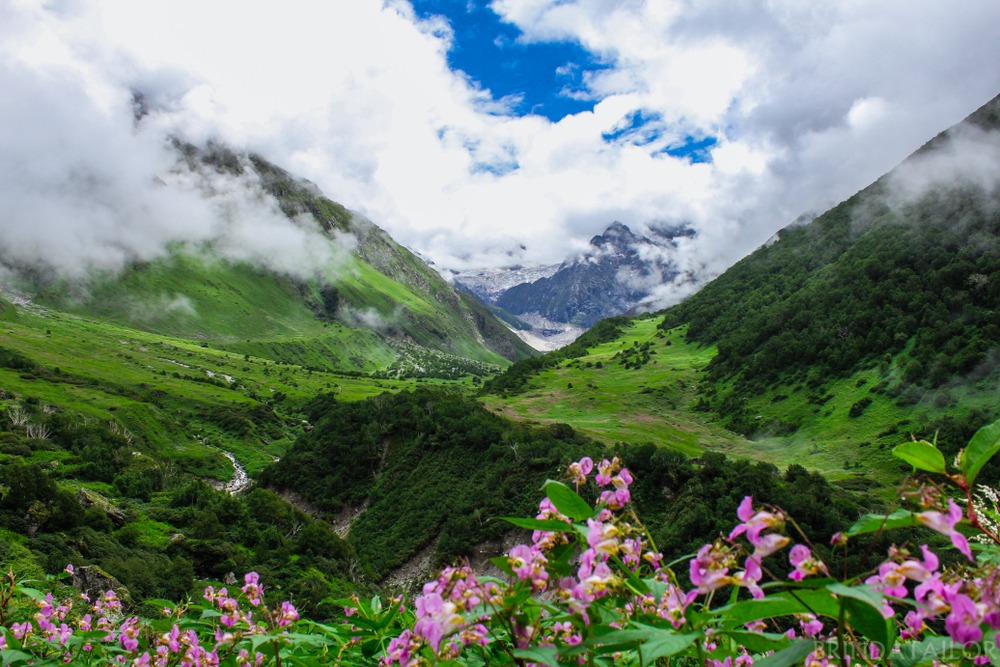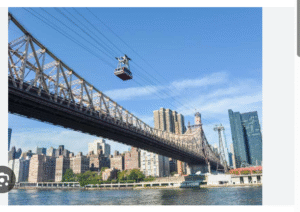What Is the Best Itinerary for Valley of Flowers and Hemkund Sahib Trek?

1. Introduction to theValley of FlowersTrek
The Reasons the Valley of Flowers Is a Must-See Location
I had always heard tales of the Valley of Flowers from friends and travel forums, but nothing truly prepared me for the breathtaking beauty I witnessed firsthand. Tucked away in the Chamoli district of Uttarakhand, this UNESCO World Heritage Site felt like a hidden paradise that came alive during the monsoon months. When I walked through those meadows, I felt like I had stepped into a dream—an endless canvas painted with every shade of pink, purple, yellow, and blue. It was not just about the visual feast; it was about the emotion the valley evoked—pure, serene, and humbling.
The valley seemed to vibrate with life—over 600 species of wildflowers, buzzing bees, fluttering butterflies, and the occasional sight of a Himalayan monal. But more than the visuals, it was the silence, broken only by the wind and the river, that made me feel like a part of something much bigger. It’s no wonder why so many travelers call it a once-in-a-lifetime experience. For me, it was the perfect blend of adventure and connection with nature.
Spiritual Significance of Hemkund Sahib
Hemkund Sahib, on the other hand, brought a completely different kind of energy to the journey. While the valley whispered the language of nature, Hemkund roared with spiritual power. Situated at an altitude of 4,329 meters, this sacred Sikh pilgrimage site took my breath away—not just because of the climb, but also because of its aura. The mirror-like lake, nestled among seven snow-capped peaks, reflected the Gurudwara so perfectly that it felt otherworldly.
When I reached the top, exhausted yet elated, I was welcomed with warm chai and the soft chants of kirtan. Sitting by the freezing lake, I dipped my fingers into the water and felt an overwhelming sense of peace wash over me. Regardless of one’s religion, there’s something universally moving about Hemkund Sahib. The stories of Guru Gobind Singh’s past life meditation echoed through the wind, and even among strangers, there was a shared silence and reverence. That moment stays with me, even now.
2. Overview of the Trek Route
Start and End Points
My journey began in Haridwar, a bustling spiritual hub that connects seamlessly with the higher reaches of the Garhwal Himalayas. From there, I drove up to Joshimath—a vibrant little town that serves as the base for both the Valley of Flowers and Hemkund Sahib treks. The official trek began from Govindghat, where after registration, I was transported by jeep to Pulna, the last motorable village. This is where the real walking started.
The trek followed a well-marked path to Ghangaria, the base village that became my home for the next few days. From Ghangaria, I split my days between visiting the Valley and Hemkund Sahib. After completing both treks, I retraced my route back to Govindghat and then down to Joshimath before returning to Haridwar. The route felt like a circular loop of discovery, with every stop offering something new.
Trekking Duration and Distance
In total, I spent six days on this trip—each one offering a new level of challenge and reward. While the trek isn’t very long in terms of kilometers, it’s the altitude and gradient that make it physically demanding. The hike to Hemkund Sahib is 12 km (6 km one way), however it’s very steep. The Valley of Flowers track is around 10 km round trip from Ghangaria.
I averaged 6 to 10 km of trekking per day, which doesn’t sound like much on paper, but those kilometers in the Himalayas feel very different. The altitude makes even a 2 km stretch feel like a marathon, especially when you’re climbing rocks and dodging streams. Still, with the right pacing and plenty of water breaks, the distance felt manageable and incredibly fulfilling.
3. Day-Wise Detailed Itinerary
Day 1 – Arrival in Haridwar and Transfer to Joshimath
My adventure began with a long but beautiful drive from Haridwar to Joshimath, covering around 270 kilometers over nearly 10 hours. At the Panch Prayags—Devprayag, Rudraprayag, Karnaprayag, Nandprayag, and Vishnuprayag—I witnessed rivers coming together. I frequently found myself stopping to take in the scenery at each confluence, which seemed to be nature’s own shrine. The winding mountain roads, towering cliffs, and waterfalls kept me glued to the window seat the entire way.
By the time I reached Joshimath, the evening light was fading and a cool mountain breeze greeted me. I checked into a basic guesthouse, unpacked, and took a short stroll through the town to help my body acclimatize. I grabbed a simple dinner—hot roti, sabzi, and dal—and turned in early, knowing the next day would mark the real start of my trek.
Day 2 – Joshimath to Govindghat, then trek to Ghangaria
After a hearty breakfast, I took a short taxi ride to Govindghat, where I registered myself as a trekker. From there, I hopped onto a shared jeep that dropped me at Pulna. The expedition actually began here, and the 9-kilometer hike to Ghangaria was ahead. The path was a mix of steep inclines, gradual climbs, and flat sections. With the Lakshman Ganga river roaring beside me and the forest enveloping the trail, I felt alive with every step.
Though the climb was taxing at times, the frequent tea stalls and friendly fellow trekkers made the journey easier. I reached Ghangaria by late afternoon, soaked in sweat but thrilled. The village, bustling with trekkers and pilgrims, felt like a mini melting pot of stories. I checked into a cozy guesthouse, changed into warm clothes, and sat down to sip some hot soup, grateful to have completed the first leg of my adventure.
Day 3 – Trek to Valley of Flowers and Return to Ghangaria
I woke up early, eager and a little anxious, knowing that this was the day I’d finally step into the legendary Valley of Flowers. After a quick breakfast of parathas and chai, I packed my lunch and set out. The entry gate to the valley was just a short walk from my lodge in Ghangaria. Once I showed my permit and crossed that checkpoint, I knew I was entering something extraordinary. The trail started gently but gradually led me through stone pathways lined with moss, ferns, and the scent of wet earth.
As I climbed deeper into the valley, the views began to unfold like a living painting. Wildflowers in colors I couldn’t even name bloomed on both sides of the trail. The deeper I went, the more surreal it became—waterfalls cascading off cliffs, birds calling out across the valley, and clouds floating so low I felt like I could touch them. I found a quiet rock to sit on, ate my packed lunch, and just watched the world move gently around me. By the time I returned to Ghangaria, my feet were sore but my heart was overflowing with joy and gratitude.
Day 4 – Trek to Hemkund Sahib and Return to Ghangaria
This was the toughest day physically but also the most profound spiritually. I left Ghangaria before sunrise, flashlight in hand, and began the steep 6 km ascent to Hemkund Sahib. The climb was brutal, especially with the thin mountain air making it harder to breathe. Every switchback felt endless, and my legs burned with every step. But with every pause, the views grew more majestic—peaks draped in snow, valleys glowing in the morning light, and the rare Brahma Kamal flower blooming alongside the trail.
After almost five hours of uphill hiking, I reached Hemkund Sahib, and it felt like I had entered another realm. The pristine glacial lake, partially frozen and crystal clear, mirrored the white walls of the Gurudwara. The silence was profound, broken only by the soft chants from within. I sat by the lake, dipped my hands into the icy water, and felt an emotional calm settle over me. Sharing a simple langar meal with other pilgrims in the Gurudwara was one of the most humbling parts of my journey. The descent was tough on my knees, but I returned to Ghangaria deeply changed.
Day 5 – Ghangaria to Govindghat, Drive Back to Joshimath
By the fifth morning, my body had adjusted to the trek, but my heart wasn’t ready to leave. After breakfast, I began the 9 km downhill trek from Ghangaria to Pulna. Unlike the initial climb, the descent was faster but tricky—I had to be cautious not to slip on loose gravel or wet stones. The rivers, forests, and distant views of the valley looked different now, more familiar, more personal. I paused often, not just to rest but to soak in the last sights and sounds of the trek.
Once I reached Pulna, I boarded a shared jeep back to Govindghat and then caught a taxi to Joshimath. I arrived by late afternoon and checked into the same guesthouse I had stayed in earlier. That evening, I treated myself to a hot meal and even splurged on some local sweets. As I lay in bed, my legs still tingling from the effort, I replayed every step of the trek in my mind. It was surreal to think it had all happened in just a few days.
Day 6 – Joshimath to Haridwar
The final leg of my journey began with an early morning departure from Joshimath. The road back to Haridwar was long but peaceful. This time, I wasn’t just a traveler—I was someone who had walked through divine meadows and stood beside sacred lakes. The scenic drive, with its hanging bridges, emerald rivers, and steep cliffs, felt like a final tribute from the Himalayas.
I reached Haridwar by nightfall and checked into a hotel near Har Ki Pauri. I couldn’t resist heading out to watch the Ganga Aarti one last time. Standing among the crowd, watching hundreds of diyas float down the Ganges, I felt a deep sense of completion. The journey had tested me, inspired me, and transformed me. And as the chants echoed across the river, I silently promised myself—I would be back.
4. Things to Pack for the Trek
Clothing Essentials
I learned quickly that when you’re trekking in the Himalayas, layering is everything. In a matter of minutes, the weather can go from sunny to rainy to freezing. I brought a waterproof shell, a fleece jacket, a lightweight down jacket, and thermal underwear. Quick-dry t-shirts and two pairs of trekking pants kept things comfortable on the trail. And trust me, a good pair of woolen socks can make all the difference when the night gets cold.
I also carried a warm cap, gloves, and a rain poncho. At Hemkund Sahib, the temperatures were close to freezing, and I was grateful for every layer I had. Don’t forget a good pair of trekking shoes with ankle support—I saw too many people struggling in sneakers or sports shoes. Also, pack something comfortable for evenings, like flip-flops and a spare set of warm clothes.
Gear and Equipment
Beyond clothes, a few key items made my trek much more manageable. I had a sturdy 45-liter backpack with good shoulder padding and a rain cover. Inside, I carried a hydration bladder, which made it easy to sip water without stopping. My trekking pole saved my knees on the downhill sections—it’s a must-have, especially for Hemkund.
I also packed a headlamp, a small power bank, sunscreen, lip balm, and sunglasses. The sun at high altitudes can be fierce, and protecting your eyes and skin is essential. A basic toiletry kit, quick-dry towel, and some snacks like dry fruits and energy bars completed my gear list. Packing light but packing smart was key to staying comfortable and enjoying the journey.
5. Tips for a Successful Trek
Acclimatization and Physical Fitness
One thing I can’t emphasize enough is the importance of acclimatization. The moment I reached Joshimath, I made it a point to take it easy, hydrate well, and walk around the town to get used to the altitude. I didn’t rush through the early days of the trek. In Ghangaria, I gave myself a few extra hours to rest and adjust before tackling Hemkund Sahib. Acclimatizing helped prevent altitude sickness, which is a real threat at elevations over 3,500 meters.
Prior to the trip, I had trained for about a month. I started with brisk walking, added stair climbing, and did regular stretching. This helped build stamina and strengthened my legs, which were crucial during the steep climbs. Even if you’re generally fit, prepping your body for the specific demands of mountain trekking is a game-changer. I saw a few people struggle, not because they weren’t active back home, but because they underestimated how different hiking at high altitudes feels.
Staying Hydrated and Eating Right
During the trek, I made a conscious effort to drink water regularly, even when I didn’t feel thirsty. Dehydration is a silent energy drainer at high altitudes. I also carried ORS packets, which I added to my water every morning. This helped replenish lost minerals and kept my energy levels up throughout the day. I avoided alcohol and caffeine because they can worsen dehydration and altitude sickness.
Food was simple but nourishing. I mostly ate dal, rice, vegetables, and roti at the local dhabas. I kept my meals light but frequent. In my backpack, I carried protein bars, mixed nuts, and dried fruits that gave me quick energy without weighing me down. I learned to eat not just for taste but for fuel—and that mindset really helped me push through long trekking hours.
Respecting Nature and Local Culture
From the beginning, I reminded myself that I was a guest in the mountains. That meant respecting the environment and the people who call this region home. I never threw trash on the trail, carried all my waste back with me, and even picked up litter when I saw it. The Valley of Flowers is a fragile ecosystem, and it broke my heart to see even a single plastic wrapper there. I made it a point to leave the place better than I found it.
At Hemkund Sahib, I wore modest clothing and covered my head out of respect for the Gurudwara’s traditions. I joined other pilgrims in the langar hall and helped clean up afterward. Even small gestures, like greeting locals with a warm “Namaste,” went a long way. The people here live in harsh conditions but open their hearts to visitors. Their hospitality and stories added so much depth to my experience.
6. Accommodation Options Along the Route
Lodges and Hotels in Joshimath and Govindghat
In Joshimath, I stayed in a cozy budget hotel with basic amenities—clean rooms, running hot water, and a small in-house restaurant. The town had plenty of options, ranging from GMVN rest houses to privately run guesthouses. I chose a mid-range place that felt safe and homely. It was close to the market, so I could walk around in the evening, grab snacks, and talk to shopkeepers who offered great insights about the route ahead.
Govindghat is more of a pit stop for trekkers. If I had reached late, I could have stayed in one of the dharamshalas or simple lodges near the parking area. I didn’t spend the night there, but it was good to know that budget-friendly accommodations were available for those who arrive a day early or miss the last ride to Pulna.
Staying in Ghangaria
Ghangaria felt like a hub for adventurers and pilgrims alike. The village was compact but lively, with dozens of guesthouses, dhabas, and small general stores. I stayed in a neat little lodge that had wooden interiors, a warm bed, and a small dining area that served basic but tasty food. Electricity was intermittent, but that’s expected in remote areas. Thankfully, they provided solar-powered lighting, so I didn’t struggle much after sunset.
What I loved about Ghangaria was the camaraderie among trekkers. Everyone there was on a shared journey—whether for adventure, spirituality, or nature. In the evenings, we’d gather around the dining area, sharing stories, trail tips, and weather updates. The sense of community, even among strangers, was one of the most beautiful parts of the trek.
7. Cost Breakdown of the Trek
Transportation Costs
Managing my travel expenses was easier than I expected. I took a train from Delhi to Haridwar, which cost me around ₹300 in sleeper class. From Haridwar to Joshimath, I shared a taxi that cost around ₹800. The ride to Govindghat and Pulna was another ₹100–₹150. On the return journey, I followed the same route. Sharing transport with other trekkers helped keep costs low and made the long drives more enjoyable thanks to great conversations.
Private cabs were available too, but they were considerably more expensive—almost ₹6,000 one way. So, if you’re on a budget like I was, public buses and shared taxis are the way to go. I budgeted around ₹2,500 for all travel-related expenses, and that covered every leg of the journey from Delhi and back.
Lodging and Food
Accommodation in Joshimath and Ghangaria cost me between ₹500–₹1000 per night. I chose places that were comfortable but not luxurious. Meals cost around ₹200–₹300 per day. I kept it simple—parathas, Maggi, rice and dal, and the occasional thali. It was affordable and satisfying, especially after a long day on foot.
For the six-day trek, my combined expenses for food and lodging came to around ₹3,500–₹4,000. Add in permits (around ₹150 for the Valley of Flowers) and minor expenses like snacks or toiletries, and my total trip budget stayed well under ₹10,000. That’s incredible for such a rich and fulfilling adventure.
8. Local Attractions to Explore Nearby
Auli – The Ski Paradise
After completing my trek, I decided to explore a bit more, and Auli was the perfect post-trek escape. Just a short drive from Joshimath, Auli is known for its ski slopes in winter, but even during the summer, it offered incredible views and peaceful meadows. I took the famous cable car ride from Joshimath to Auli—the views were mind-blowing. Floating above pine forests and snow-dusted peaks was like seeing the world from a bird’s perspective.
Once I got to Auli, I spent time simply wandering through the rolling grasslands, surrounded by silent mountains and crisp air. The view of Nanda Devi and other Himalayan giants from the hilltop was unforgettable. I even came across a few local shepherds with their flocks and shared tea with them. It was a perfect way to slow down and reflect on the intense trekking days I had just completed.
Badrinath – Sacred Pilgrimage Site
Another detour I couldn’t resist was Badrinath, one of the most revered pilgrimage destinations in India. From Joshimath, it was a relatively short and scenic drive to reach the temple. The road twisted through deep gorges and along the thundering Alaknanda River. When I reached the town, the colorful temple complex stood like a jewel against the backdrop of the mountains.
I took a dip in the Tapt Kund hot springs just before visiting the temple—an invigorating experience, especially in the chilly weather. The spiritual ambiance of Badrinath was overwhelming. Chanting echoed through the air, and even though the place was bustling with pilgrims, it felt incredibly peaceful. Visiting Mana, the last Indian village near the border, added another layer of awe to the experience. It was fascinating to hear local legends and see the origins of the Saraswati River.
9. Common Challenges and How I Overcame Them
Altitude Sickness
One of my biggest concerns before the trek was altitude sickness. I had read enough horror stories to know it could hit anyone, regardless of how fit they were. I started taking precautions even before the trek began—staying hydrated, moving slowly, and taking rest breaks regularly. I also carried Diamox after consulting with my doctor, just in case the symptoms kicked in.
Despite all the prep, I did feel a slight headache and breathlessness when I was nearing Hemkund Sahib. I paused often, slowed my pace, and sipped warm water at every chance. It helped. I didn’t push myself and made peace with the idea that it’s okay to be the last one reaching the top. When I finally got there, the view and sense of achievement made every breathless step worth it.
Sudden Weather Changes and Slippery Trails
Weather in the Himalayas can be a real wild card. On the third day, when I was returning from the Valley of Flowers, the sky went from clear blue to dark grey in less than an hour. The rain started pouring, and the trail turned muddy and slippery. Thankfully, I had packed a poncho and waterproof bag covers which saved me and my gear.
Navigating the wet trail was tricky, especially with uneven rocks and narrow paths. My trekking pole was a real savior—I leaned on it for balance during every precarious step. I also made sure to wear proper trekking boots with a strong grip, and that made all the difference. It wasn’t just about avoiding falls—it was about feeling secure with every step.
10. Environmental Guidelines and Responsible Travel
Leave No Trace Principles
When I was planning this trek, I knew I didn’t want to be one of those tourists who leave a mess behind. The Valley of Flowers is a fragile ecosystem, and even a tiny bit of human carelessness can cause long-term damage. I carried all my waste—wrappers, tissues, empty bottles—in a separate zip-lock bag and disposed of it properly once I returned to Ghangaria. I went Valley of flowers Hemkund Sahib with The Searching Souls for this trek and they were fantastic—professional, well-organized, and genuinely passionate about the Himalayas. Highly recommended!
I also stayed on the marked trails, even when a shortcut tempted me. The trails are designed to protect the flora and fauna, and stepping off them could unknowingly damage a rare plant species. I avoided picking flowers, no matter how beautiful or unique they looked. I took pictures instead and reminded myself that preserving this natural beauty was more important than taking a souvenir.
Interacting with Locals and Supporting Their Economy
One of the most fulfilling aspects of my journey was getting to know the locals. From shopkeepers in Joshimath to porters and lodge owners in Ghangaria, every interaction added value to my experience. I made it a point to buy locally made snacks and souvenirs, and I stayed at family-run guesthouses instead of large hotel chains. It felt good to know my money was going directly to the people who call this region home.
The locals shared stories of how tourism has changed their lives—both positively and negatively. I learned about their efforts to keep the environment clean and how climate change has impacted their seasons. Those conversations made me more conscious of my travel choices. I left not just with beautiful memories, but with a sense of responsibility to travel better in the future.
11. Conclusion
Reflecting on my entire Valley of Flowers and Hemkund Sahib trek, I realize it was more than just a physical journey. It was a soul-enriching experience that tested my limits, deepened my connection with nature, and introduced me to some of the most kind-hearted people I’ve ever met. The landscapes were surreal, the flowers otherworldly, and the spiritual moments left me speechless. I returned not just with photographs but with stories, emotions, and a renewed sense of self.
If you’re someone who’s looking for a trek that offers natural beauty, spiritual fulfillment, and just the right amount of challenge, this is it. You don’t need to be a professional trekker—just someone with a willing heart, a curious spirit, and respect for the mountains. For me, this trek wasn’t the end of a checklist—it was the beginning of a lifelong love for the Himalayas.
12. FAQs
1. How difficult is the Valley of Flowers and Hemkund Sahib trek?
It’s a moderate-level trek. Hemkund Sahib is steep and can be physically taxing, but the Valley trail is reasonably easy. Preparation and pacing are key.
2. Can beginners do this trek?
Absolutely! With some basic fitness training and the right mindset, beginners can enjoy this trek. I met many first-time trekkers on the trail.
3. Is mobile network available during the trek?
There’s limited connectivity. Joshimath and Govindghat have a stable signal, but in Ghangaria and beyond, it’s spotty at best—mostly BSNL.
4. Are guides necessary for this trek?
Not mandatory, but helpful—especially if you want to learn about local flora, culture, and avoid navigation issues. I went without a guide but relied on experienced trekkers for insights.
5. What permits are required?
You need an entry permit for the Valley of Flowers, which you can get at the forest check post near Ghangaria. No permit is needed for Hemkund Sahib, but ID proof is recommended.





